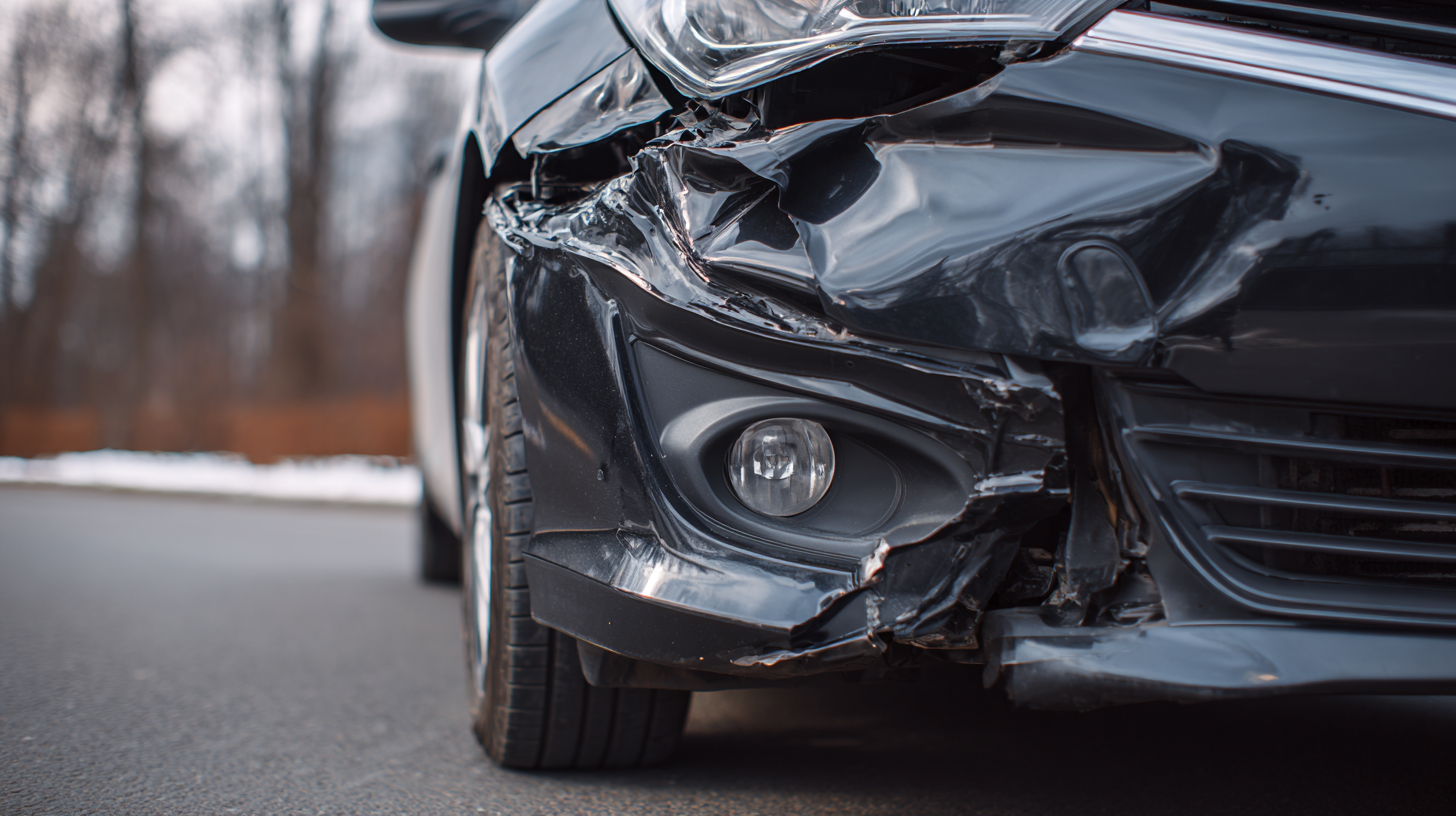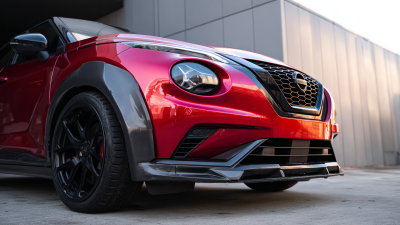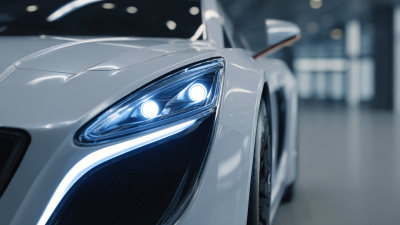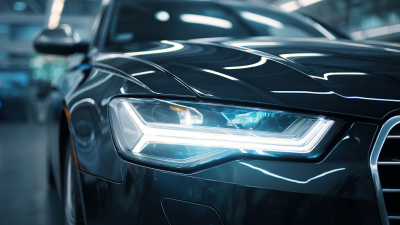
What is a Car Front Bumper and Why is it Crucial for Vehicle Safety and Performance
The car front bumper plays a vital role in vehicle safety and performance, often overlooked yet crucial in protecting both the car and its occupants. Acting as the first line of defense against collisions, a well-designed bumper absorbs impact energy, minimizing damage to the vehicle's frame and vital components. Additionally, it aids in aerodynamic efficiency, enhancing fuel economy and stability at higher speeds. In this blog, we will explore the significance of the car front bumper, examining its various functions and how it contributes to overall vehicle safety. We will also delve into the best types of bumpers available in the market today, ensuring that drivers have the knowledge to make informed decisions about their vehicle's protection and performance. Understanding the importance of the car front bumper is essential for every car owner, as it directly affects the safety of both the vehicle and its passengers.

Understanding the Role of a Car Front Bumper in Vehicle Safety Standards
A car's front bumper is not merely a stylistic component; it plays a pivotal role in vehicle safety standards. Designed to absorb impact during collisions, the bumper helps to protect both the occupants and vulnerable pedestrians. The materials used in bumper construction, such as plastic and composite materials, are specifically chosen to meet safety regulations. These materials can significantly reduce the transfer of energy during an impact, thus minimizing injuries and damage to the vehicle itself.
When considering maintenance or replacement of a front bumper, it's essential to ensure that the new bumper meets the vehicle's safety ratings. Here are a few tips: First, always choose bumpers that comply with industry safety standards to ensure maximum protection. Second, consider the bumper's ability to withstand various types of impacts—this can be crucial in everyday driving scenarios. Lastly, regular inspections for cracks or damage can help identify vulnerabilities early on, allowing drivers to address potential safety issues promptly.
Overall, understanding the role of the front bumper in enhancing vehicle safety is crucial for all drivers, as it significantly contributes to preventing injuries and safeguarding the car’s integrity.

Key Materials and Technologies Used in Modern Front Bumper Designs
The front bumper is a critical component of today's vehicles, providing both safety and performance enhancements. Modern front bumper designs utilize a variety of materials and technologies to meet rigorous safety standards and improve aerodynamic efficiency. One common material is high-density polyethylene (HDPE), favored for its lightweight yet durable properties. This contributes to energy absorption during collisions, reducing the impact on passengers and the vehicle itself.
Additionally, the integration of advanced technologies such as impact sensors and crumple zones makes modern bumpers even more effective. These sensors can detect collisions and adjust the car’s performance systems in real-time, ensuring maximum protection. Furthermore, innovative design techniques, such as the use of foam inserts and reinforced structures, enhance the bumper's ability to manage crash energy. By combining these materials and technologies, automotive engineers are continually improving the front bumper's role in vehicle safety and overall performance.

How Front Bumpers Enhance Aerodynamics and Fuel Efficiency
The front bumper of a vehicle plays a crucial role in not only protecting passengers but also in enhancing the vehicle’s aerodynamics. A well-designed front bumper can significantly reduce drag, which is a critical factor in overall performance and fuel efficiency. Innovations focusing on the optimization of the bumper shape and its alignment with the vehicle's airflow can lead to substantial improvements in reducing the drag coefficient (CD). By minimizing wind resistance, vehicles can achieve better fuel economy and a smoother driving experience.
Aerodynamic enhancements have become essential as manufacturers look to meet increasing efficiency standards and consumer expectations. For instance, studies have shown that even a small reduction in aerodynamic drag—around 2%—can yield up to a 1% improvement in fuel economy. This principle is applicable across various types of vehicles, including passenger cars and commercial fleets. Forward-thinking designs in the front bumper not only contribute to aesthetics but are also vital in achieving operational efficiencies, thereby supporting eco-friendly practices within the automotive industry.
What is a Car Front Bumper and Why is it Crucial for Vehicle Safety and Performance
| Attribute | Details |
|---|---|
| Material | Polymer composites, metal, and plastic |
| Primary Function | Protection during collisions, absorbs impact energy |
| Aerodynamic Role | Reduces drag, improves vehicle stability |
| Impact on Fuel Efficiency | Better aerodynamics can lead to lower fuel consumption |
| Regulatory Compliance | Must meet safety standards set by automotive regulations |
| Replacement Cost | Varies greatly, typically between $300 - $1,500 |
| Additional Features | Can integrate sensors, styling elements, and lighting |
Impact Resistance: Testing Standards for Vehicle Bumpers Explained
When it comes to vehicle safety, the front bumper plays a critical role, particularly in absorbing impact during collisions. To ensure that bumpers effectively protect both the driver and the passengers, specific testing standards have been established. These standards assess a bumper's ability to withstand various types of impacts without compromising the vehicle's structural integrity or the safety of its occupants.
Tips for enhancing your vehicle's bumper performance include regularly inspecting for signs of wear and tear, such as cracks, dents, or paint fading. Ensuring that your bumper is free from major damage can significantly improve its impact resistance. Additionally, consider upgrading to aftermarket bumpers that comply with the latest safety regulations, as they may offer enhanced protection in case of an accident.
Another crucial aspect is understanding the different types of materials used in bumper manufacturing. Bumpers made from high-strength plastics and metals can provide superior impact resistance. Always opt for bumpers that meet stringent testing standards, as they are designed to enhance both safety and performance, ensuring that your vehicle remains resilient under various driving conditions.
Impact Resistance of Vehicle Bumpers
Maintaining Your Front Bumper: Tips for Safety and Performance Optimization
Maintaining your front bumper is essential for both safety and optimal vehicle performance. With the front bumper being one of the primary lines of defense against impacts, regular inspections can prevent severe damage. According to the Insurance Institute for Highway Safety (IIHS), a well-maintained bumper can absorb significant impact forces, reducing the risk of injury to passengers by up to 30% during collisions. Therefore, routine checks for signs of wear, such as cracks or misalignments, are crucial.
Tips for maintaining your front bumper include regularly washing it to remove debris and prevent corrosion. Pay special attention to areas where the bumper meets the chassis; dirt buildup can lead to degradation over time. Additionally, consider applying a protective sealant designed for automotive use, which can shield the surface from scratches and UV damage. Ensuring that the bumper is securely fastened can also enhance its performance during an accident, maintaining structural integrity.
Finally, if your bumper has been in an accident, even if it appears fine, it may still need professional assessment. A report from the National Highway Traffic Safety Administration (NHTSA) indicates that about 20% of minor impacts result in hidden structural damage that compromises safety features. Regular maintenance and thorough inspections will help keep your vehicle safe and performing at its best.
Related Posts
-

The Future of Automotive Safety: Innovations in Front Bumper Design
-

Bumper Front Comparison Analysis Unveiling Performance and Durability Differences
-

Unleashing the Advantages of Investing in a High Quality Front Bumper
-

Future Innovations in Car Front Bumper Technology for 2025
-

How to Choose Quality Audi Auto Parts for Optimal Performance
-

Chinese Manufacturing Elevating Global Standards with the Best Audi Auto Parts



